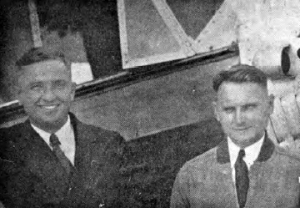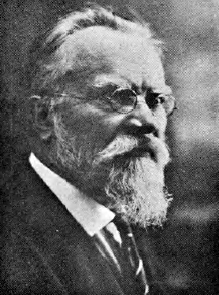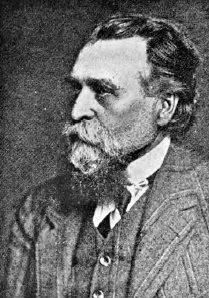Part II: Lithuanian Immigration to the United States
Organizations
The natural tendency to organize for various reasons — religious, educational, business or other — is especially strong among the Lithuanians.[1] One of the first societies they organized in the United States was the St. George’s Beneficial Society, founded in 1877 in Shenandoah.[2] The purposes of this society were both religious and benevolent. In the former instance, the creation of a purely Lithuanian parish was desired, while in the latter survival was the goal. Since working conditions for these immigrants were difficult, with a lack of unions, social security, unemployment insurance, work laws for children and women, and medical programs, the Lithuanians, as well as other ethnic groups, formed their own benevolent societies. The aggregate of these local and national societies literally numbered in the thousands.
On the national scale three benevolent societies dominated. The first successful attempt to amalgamate the various local societies was made in 1886 and resulted in the formation of not one but two alliances, due to a split over ideological differences. The first was the Alliance of all Lithuanians in America, founded on August 15, 1886, by Jonas Šliupas,[3] who was very active in Lithuanian affairs both in this country and Lithuania. He worked for the establishment of an independent Lithuania, and had written for the newspaper Aušra (Dawn), which was printed in East Prussia from 1883 to 1886, then smuggled into Lithuania where it advanced the nationistic movement. In 1884 he arrived in the United States, where he completed his medical studies seven years later.[4]



Šliupas’ ideas were similar to those of the second major society, the Alliance of All Lithuanian Catholic Societies, which was formed November 22, 1886, by Reverend Antanas Varnagiris. The main difference was that this group demanded its members be practicing Catholics. Šliupas’ Alliance lasted only two years, so the Alliance of Lithuanian Catholic Societies in America became officially registered in Pennsylvania on November 4, 1889 as the Lithuanian Alliance of America. Its official organ was Vienybė Lietuvininkų (Lithuanian Unity).
Under the leadership of Reverend Aleksandras Burba from 1890 to 1894, the word ‘Catholic’ was again included, and the Alliance primarily concerned itself with the need for Lithuanian books, schools, homes for the elderly, and orphanages. When Burba had to resign because of ill health, Rev. Jonas Žilinskas-Žilis was elected. By that time the Alliance had some 1,000 members. Žilinskas again omitted the word ‘Catholic,’ and the Lithuanian Alliance of America became more interested in the economic welfare of its members, and permitted anyone to join, as long as they did not openly attack the Church. Nevertheless, friction continued between the Catholics and the Freethinkers, and the two groups split in 1901 during a convention in Wilkes-Barre, Pennsylvania.
The Catholic faction adopted the name Lithuanian Roman Catholic Alliance of America, and the Freethinkers assumed the title Lithuanian Alliance of America, which had been officially used since 1896. The third group, the Association of Lithuanian Workers, was formed as a result of an unsuccessful attempt by the communists to take over a convention of the Lithuanian Alliance of America in 1930.[5] The Association of Lithuanian Workers was composed of leftists, running all the way from the mild socialist to hard core communist, and for a number of years was on the subversive list of the F.B.I. Only a small number of its members, however, were ideological Marxists.
In addition to these benevolent societies, there were also other Significant nation-wide nonbenevolent societies formed. One of the largest of these, the Knights of Lithuania, formed in Lawrence, Massachusetts, on April 27, 1913, was largely the work of Mykolas Norkunas, who realized the need for a youth organization. An offshoot of the American-Lithuanian Roman Catholic Alliance, the theme of the group was “For God and Country and all for Lithuania, and Lithuania for Christ.” In 1915, the Knights of Lithuania began publishing the Vytis (The Knights) magazine, which is now the oldest, continuously running Lithuanian magazine in existence.[6]
In addition to these, there were also the following national associations: the Lithuanian Roman Catholic Federation of America; the Abstinence Union, the Lithuanian Roman Catholic Women’s Alliance of America, the Lithuanian Roman Catholic Students’ Association, the Lithuanian Roman Catholic Press Association, Motinele (Little Mother), the Lithuanian Roman Catholic Priests’ Association, Lithuanian Charities, Order of Romuva, Lithuanian Patriots’ Association, the Lithuanian National League of America, the Lithuanian Relief Fund, the Socialist Federation, Lithuanian Women’s Progressive Alliance,[7] the American Lithuanian Workers’ Literary Society, the Supreme Lodge of Lithuanians in America, the American Lithuanian Mothers’ Association, the American Lithuanian Economic Center, Lithuanian Freethinkers’ Federation of America, the Aušra Association, Lithuanian Doctors’ Society, the Lithuanian Socialist Association, and the Lithuanian Art Association.
With the takeover of Lithuania by Soviet Russia, a number of new organizations came into being. One of the first was the Lithuanian American Council (Amerikos Lietuvių Taryba-ALT), whose primary goal was to help free Lithuania. The Council originated at a meeting of the Lithuanian Roman Catholic Federation in Pittsburgh on June 15, 1940, where it was decided that an organization of national Catholic groups would be more effective in fighting to aid Lithuania.[8] A second organization, the United Lithuanian Relief Fund of America, Inc., (Bendras Amerikos Lietuvių Fondas-BALF) was created by the ALT, and was to be apolitical and have no specific religious ties. It was incorporated on May 1, 1944, in Illinois. Directed by a council of 21 members, BALF’s primary goal is to collect funds to aid in the resettlement of Lithuanians displaced by the war, and send relief packages to Lithuanians in the displaced persons camps in Western Europe.[9]
Another organization that was to reach beyond the borders of the United States was the Lithuanian World Community (Pasaulio Lietuvių Bendruomenė-PLB) which united all of the Lithuanian communities in the free world. In addition, it supports Saturday Schools, about which more will be said later, holds international dance and song festivals and conferences, and sponsors international Lithuanian youth congresses.
The Supreme Lithuanian Liberation Committee (Vyriausiasis Lietuvos Išlaisvinimo Komitetas-VLIKas) had its origins in Lithuania under German occupation. Organized from two separate groups fighting for the same cause, the organization was transferred to Germany and then sections established in a number of countries, including the United States, VLIKas, using money raised by its National Fund (Tautos Fondas), prints the Elta Bulletin in several languages, including English, to inform the free world of conditions in occupied Lithuania. Also, in 1970 it instituted Lithuanian radio programs from the Phillipines for Lithuanians still imprisoned in Siberia.[10]
One final national project that deserves mention is the Lithuanian Fund (Lietuvių Fondas), which was instituted to collect one million dollars. The interest from this is used to support projects that will help to preserve Lithuanian culture.[11] There were, of course, a number of other organizations formed, including the Lithuanian Doctors’ Association, Lithuanian Destists’ Association, Friends of the Lithuanian Front, the Lithuanian Historical Society, the Lithuanian-American Artist Club, and the Lithuanian Societies of Writers and Journalists.
- Charles W. Coulter, The Lithuanians of Cleveland (Cleveland, 1920), 12. ↵
- Kučas, Shenandoah, 171. ↵
- E.L., III, 394. ↵
- L.E., XXX, 56, 57. ↵
- E.L., III, 394, 395. ↵
- Ignas Sakalas, Lietuvos Vyčiai Amerikoje (Lithuanian Vyciai in America), (Chicago, N.D.), 121-125. ↵
- Coulter, The Lithuanians, 13. ↵
- L.E., I, 147. ↵
- L.E., II, 376. ↵
- Kučas, Amerikos, 581, 582. ↵
- Kučas, Amerikos, 581, 582. ↵
